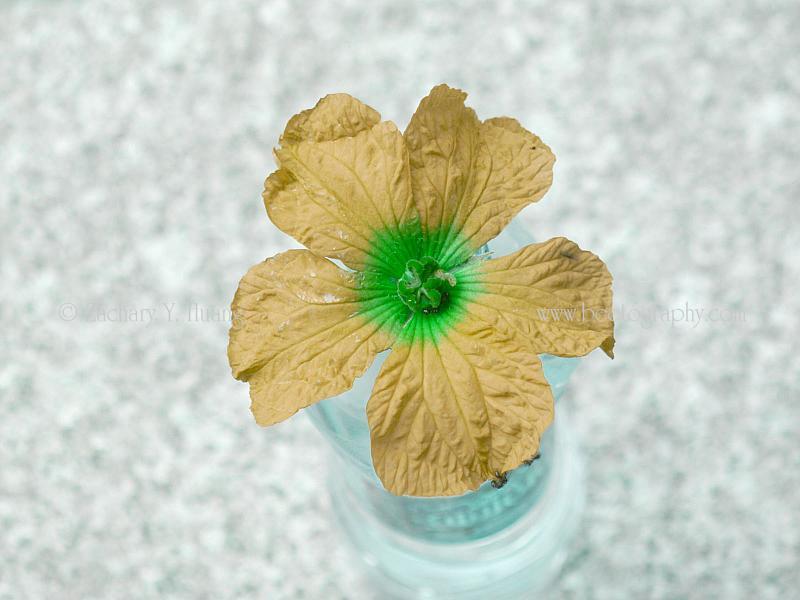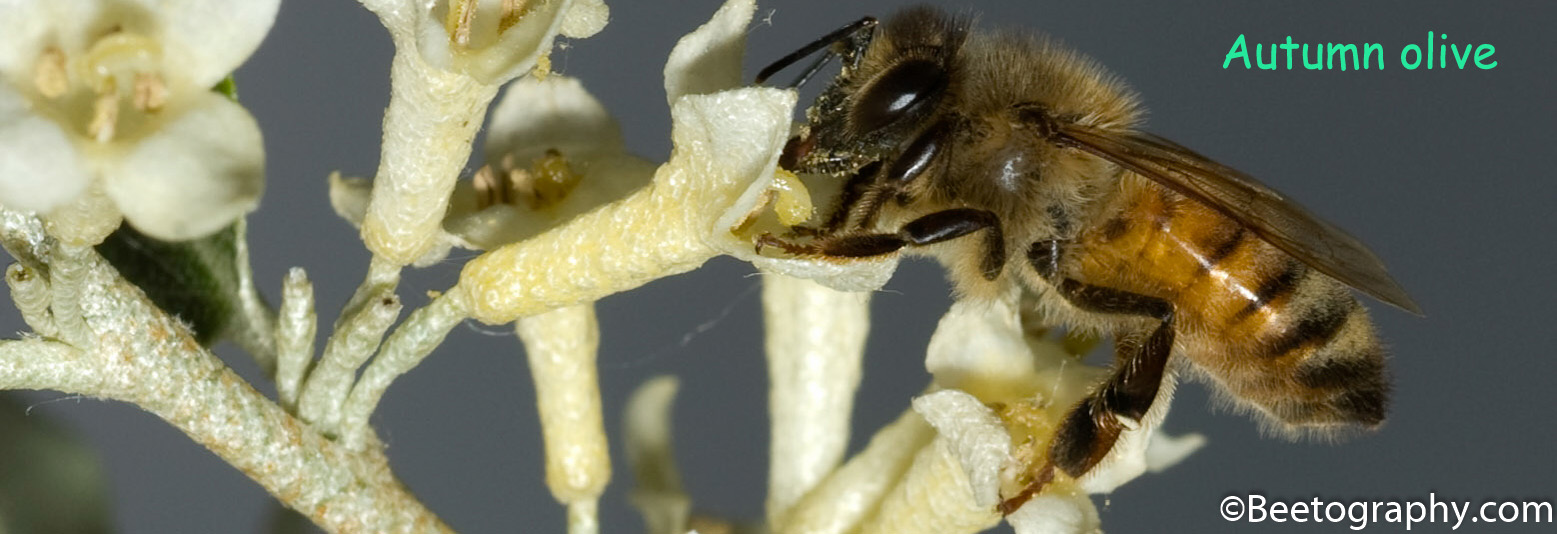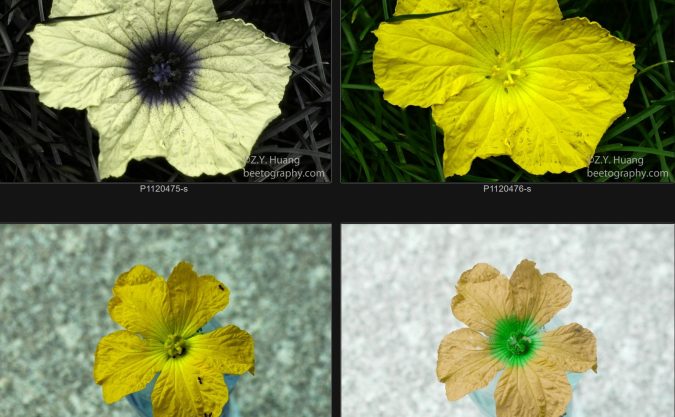This is a “formal post” to the site dedicated to ultraviolet photography, http://www.ultravioletphotography.com.
I have previously seen many bees visiting this flower, perhaps for both nectar and pollen. The nectar guides are basically not there when seeing under natural light (what we see), but if you pay close attention, you see the inner circle is actually slightly brighter and smoother, the areas that are darker under ultraviolet light (UV). Under UV, the nectar guide is highly prominent, almost black due to the fact that most of the UV are absorbed and not reflected back. When I shot it using a different set of filters, with S8612 to block infrared (IR), and then UG5, which lets in some visible light AND UV, it has a nice green center. This is perhaps what insects, including honey bees are seeing.
Huang, Z.Y. (2015) Luffa aegyptiaca Mill. (Cucurbitaceae) Luffa. Flowers photographed in visible light, ultraviolet, and simulated insect vision. http://www.ultravioletphotography.com/content/index.php/topic/1382-luffa-aegyptiaca-luffa/
Beijing, China
22 Sept, 2014
Cultivar in vegetable garden.
Synonyms:
- Cucurbita luffa hort.
- Luffa cylindrica M.Roem.
- Luffa aegyptica (lapsus)
- Luffa pentandra Roxb.
- Momordica cylindrica L.
- Momordica luffa L.
Common Names:
- Luffa, loofah, 丝瓜 sigua (Chinese)
Comment:
Photographs taken with both female and male flowers, in the order of visible light, ultraviolet, and simulated insect vision.
Reference:
1. Wikipedia (23 May 2015) Luffa aegyptiaca. Wikimedia Foundation, San Francisco, CA.
Equipment [Panasonic DMC-G5-broadband + El Nikkor 80mm f/4.5 old format]
1. Visible Light [f/8 for 1/30″ @ISO160, S8612 (1.75 mm thick), natural light] 可见光
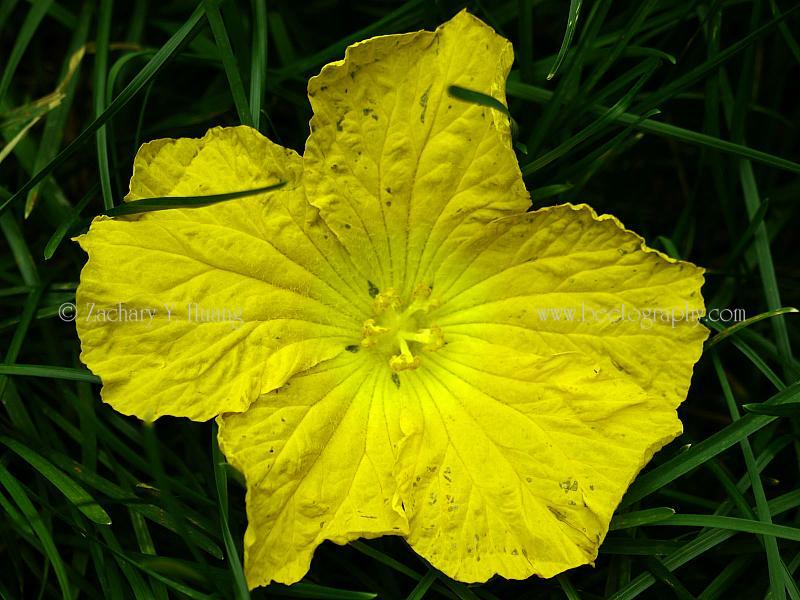
2. Ultraviolet Light [f/8 for 15″ @ISO160, S8612 (1.75 mm thick) and UG 11 (1 mm thick), natural light] 紫外
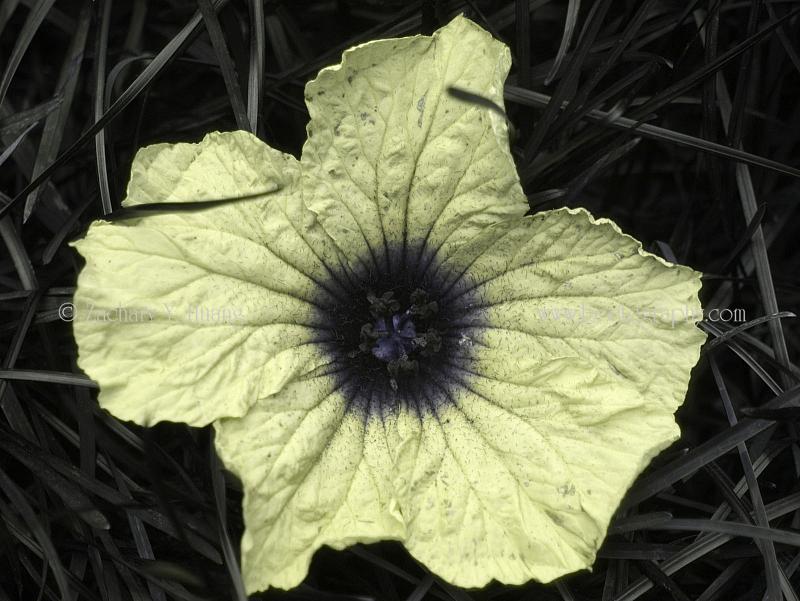
2b. 100% crop of the flower showing trichomes (hairs) that absorb UV and shown as dark. 紫外局部
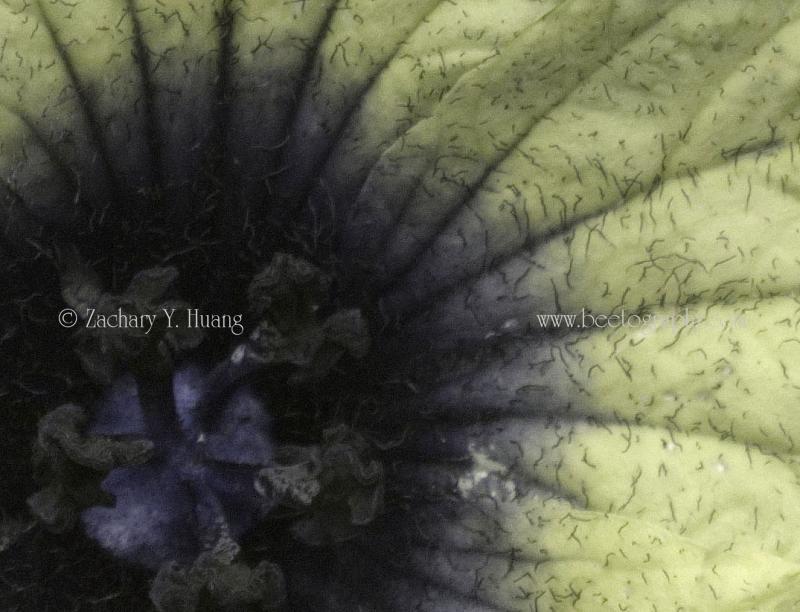
3. Simulated Insect Vision[f/8 for 15″ @ISO160, S8612 (1.75 mm thick) and UG 5 (1.5 mm thick), natural light]昆虫视觉
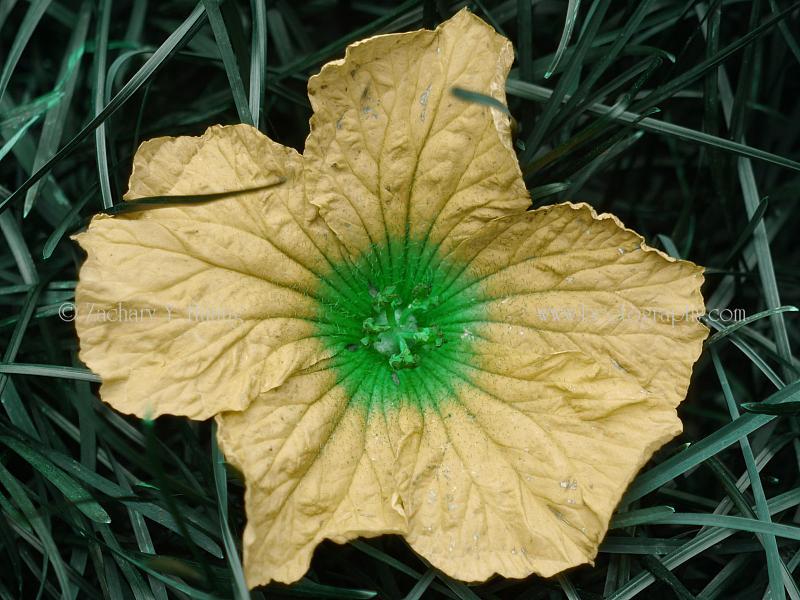
Set B, a female flower. UV signatures are very similar.
4. Visible Light [f/8 for 1/200″ @ISO160, S8612 (1.75 mm thick), natural light]可见光
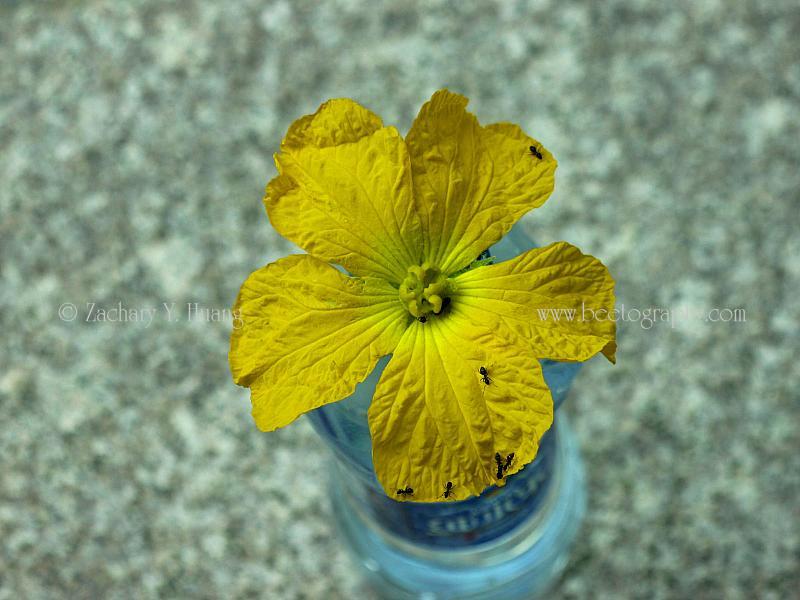
5. Ultraviolet Light [f/8 for 1.3″ @ISO160, S8612 (1.75 mm thick) and UG 11 (1 mm thick), natural light]紫外
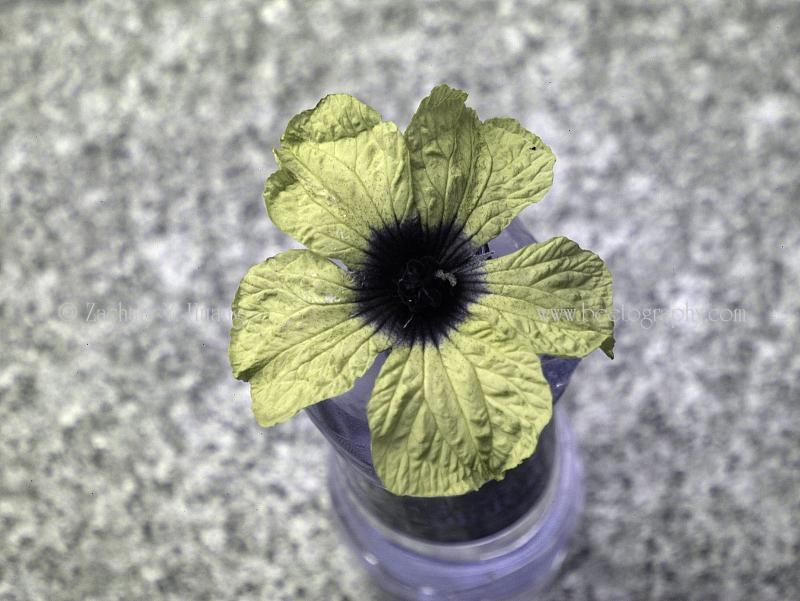
6. Simulated Insect Vision [f/8 for 1/4″ @ISO160, S8612 (1.75 mm thick) and UG 5 (1.5 mm thick), natural light] 昆虫视觉
